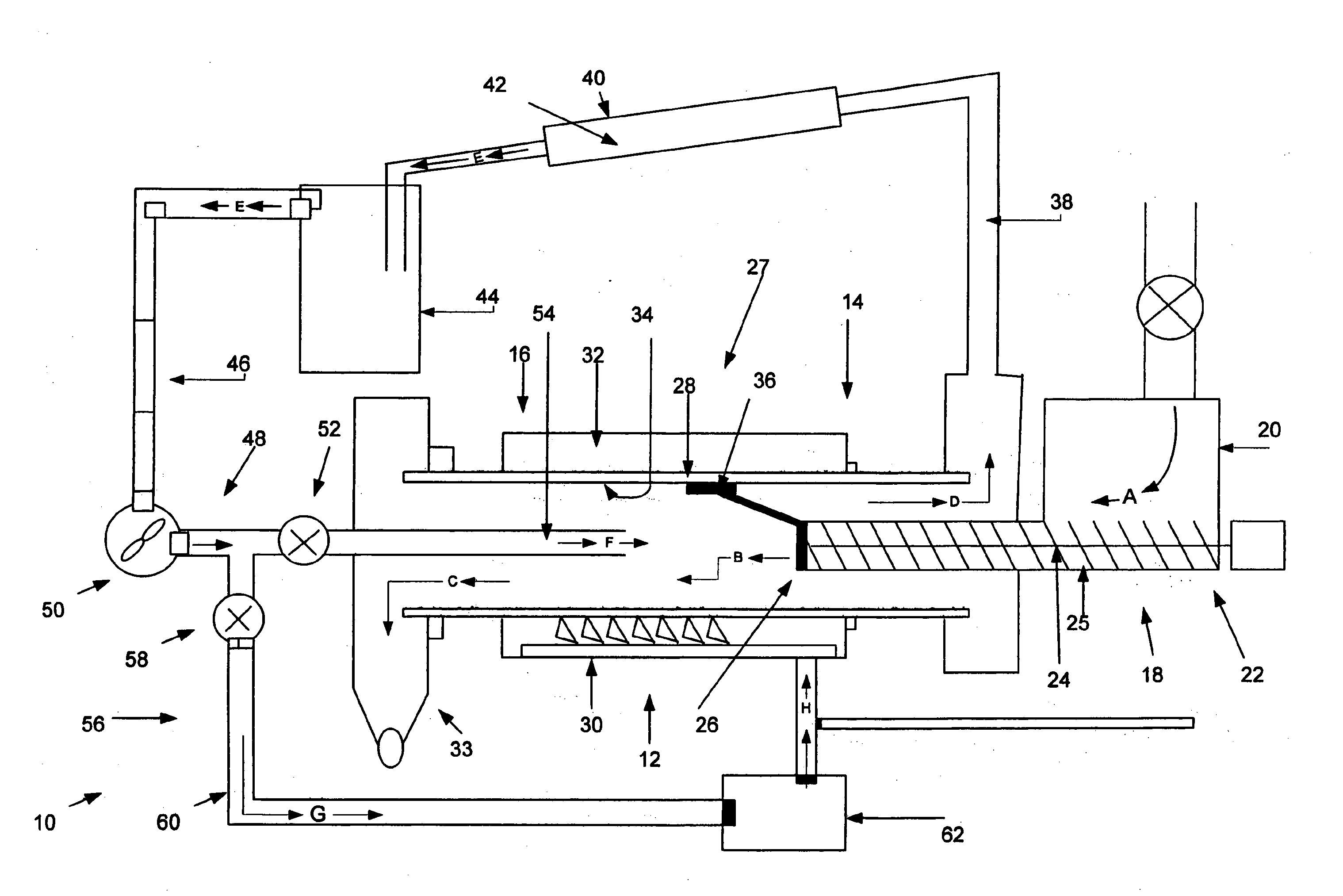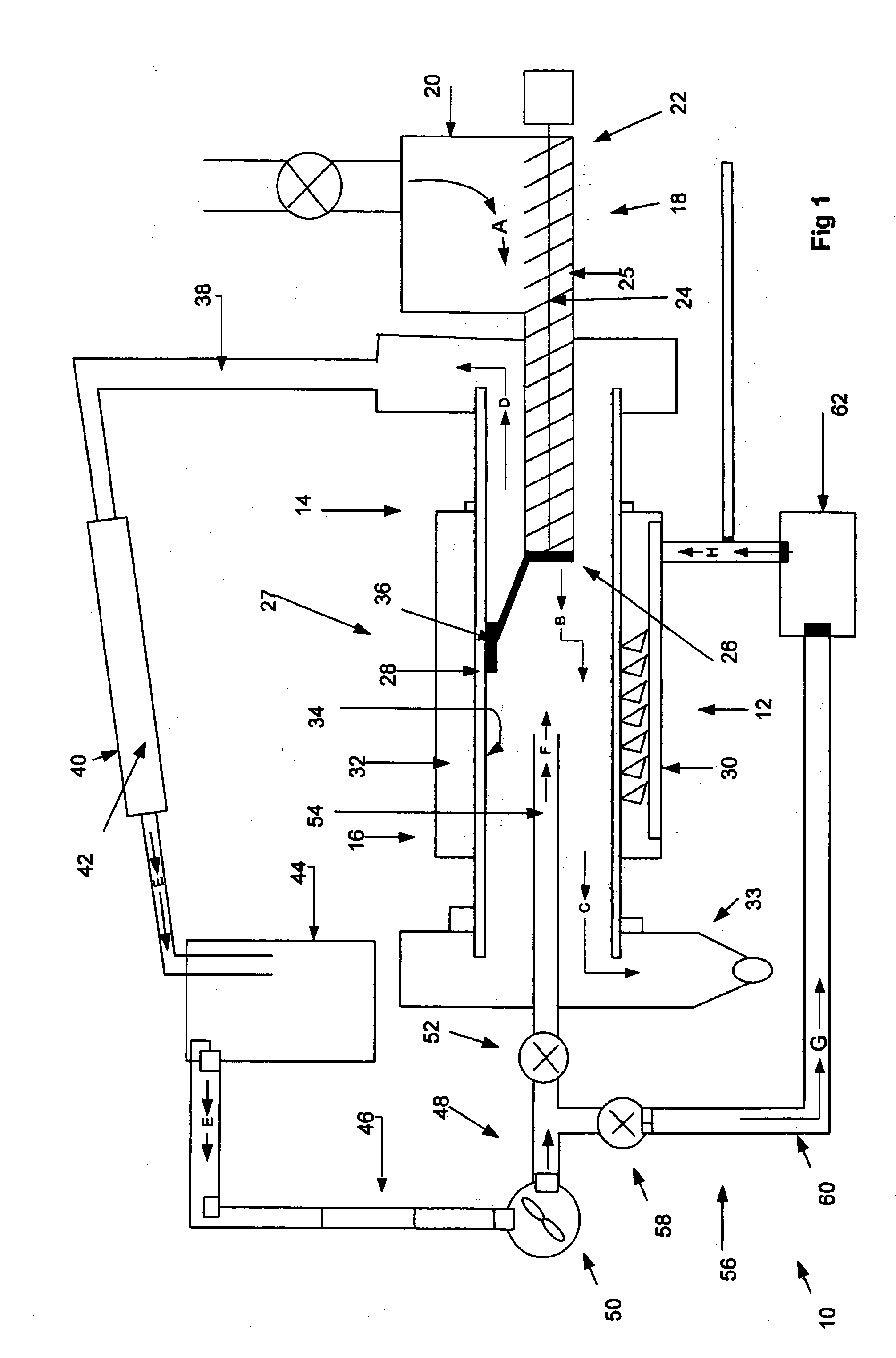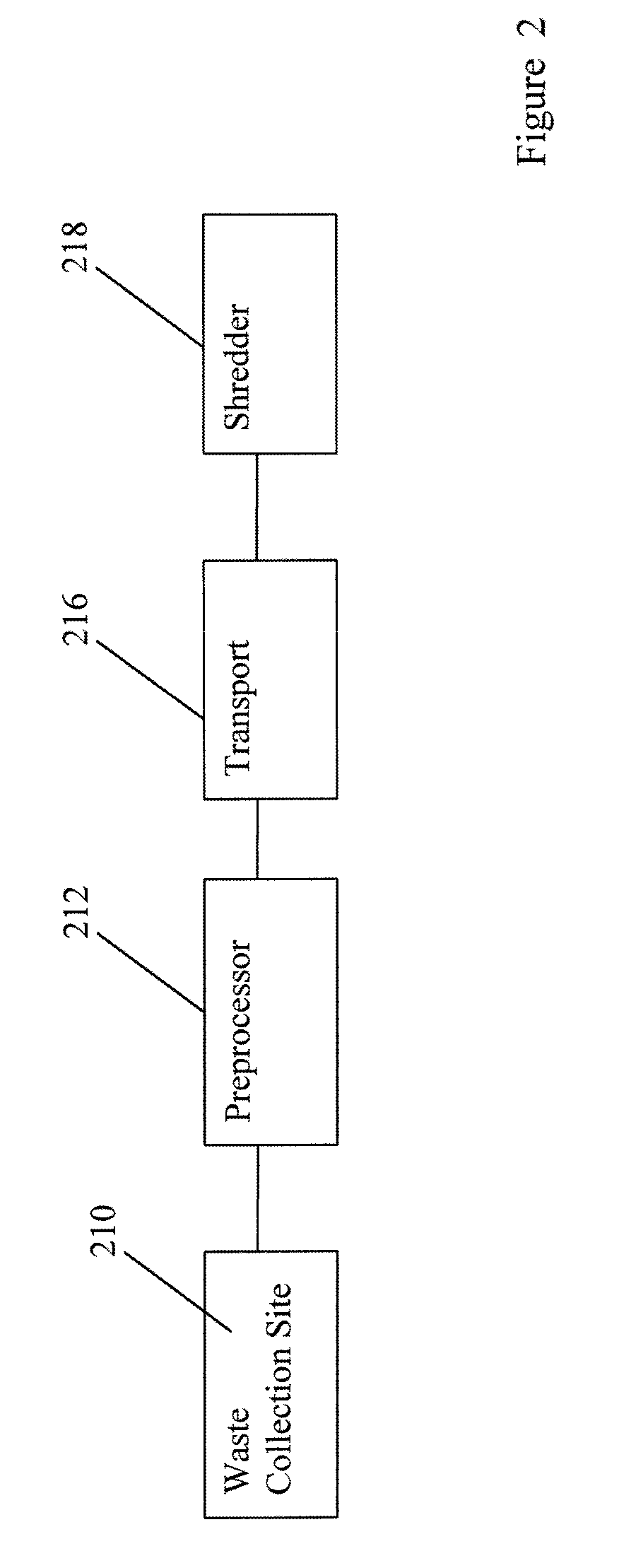System And Method For Recycling Of Carbon-Containing Materials
a carbon-containing material and recycling technology, applied in the field of carbon-containing material recycling, can solve the problems of long-standing disposal problems, substantial reduction of disposal opportunities, and consequent increase of disposal costs, and achieve the effect of increasing the rate of pyrolysis
- Summary
- Abstract
- Description
- Claims
- Application Information
AI Technical Summary
Benefits of technology
Problems solved by technology
Method used
Image
Examples
Embodiment Construction
[0054]FIG. 1 shows a system 10 for recycling carbon-containing material. Examples of such carbon-containing material include, but are not limited to, waste tyres, waste plastics, tyre shred, rubber crumb and animal waste.
[0055]The system 10 includes a heating arrangement, i.e. a pyrolysis reactor, 12 having upstream and downstream ends 14, 16 and a feed arrangement 18 for feeding carbon-containing material into the heating arrangement 12. The feed arrangement 18 includes a feed source 20, such as a hopper, for supplying pieces of carbon-containing material to an input end 22 of a rotatable screw 24 located inside a static feed tube 25. This is indicated by the arrows A.
[0056]In the present invention, the diameter of the carbon-containing particle is from 30 to 300 mm, preferably 40 to 200 mm, and most preferably 50 to 150 mm. The individual pieces of carbon-containing material in the present example have a size in the order of 100 mm by 250 mm and these individual pieces are fed by ...
PUM
 Login to View More
Login to View More Abstract
Description
Claims
Application Information
 Login to View More
Login to View More - R&D
- Intellectual Property
- Life Sciences
- Materials
- Tech Scout
- Unparalleled Data Quality
- Higher Quality Content
- 60% Fewer Hallucinations
Browse by: Latest US Patents, China's latest patents, Technical Efficacy Thesaurus, Application Domain, Technology Topic, Popular Technical Reports.
© 2025 PatSnap. All rights reserved.Legal|Privacy policy|Modern Slavery Act Transparency Statement|Sitemap|About US| Contact US: help@patsnap.com



